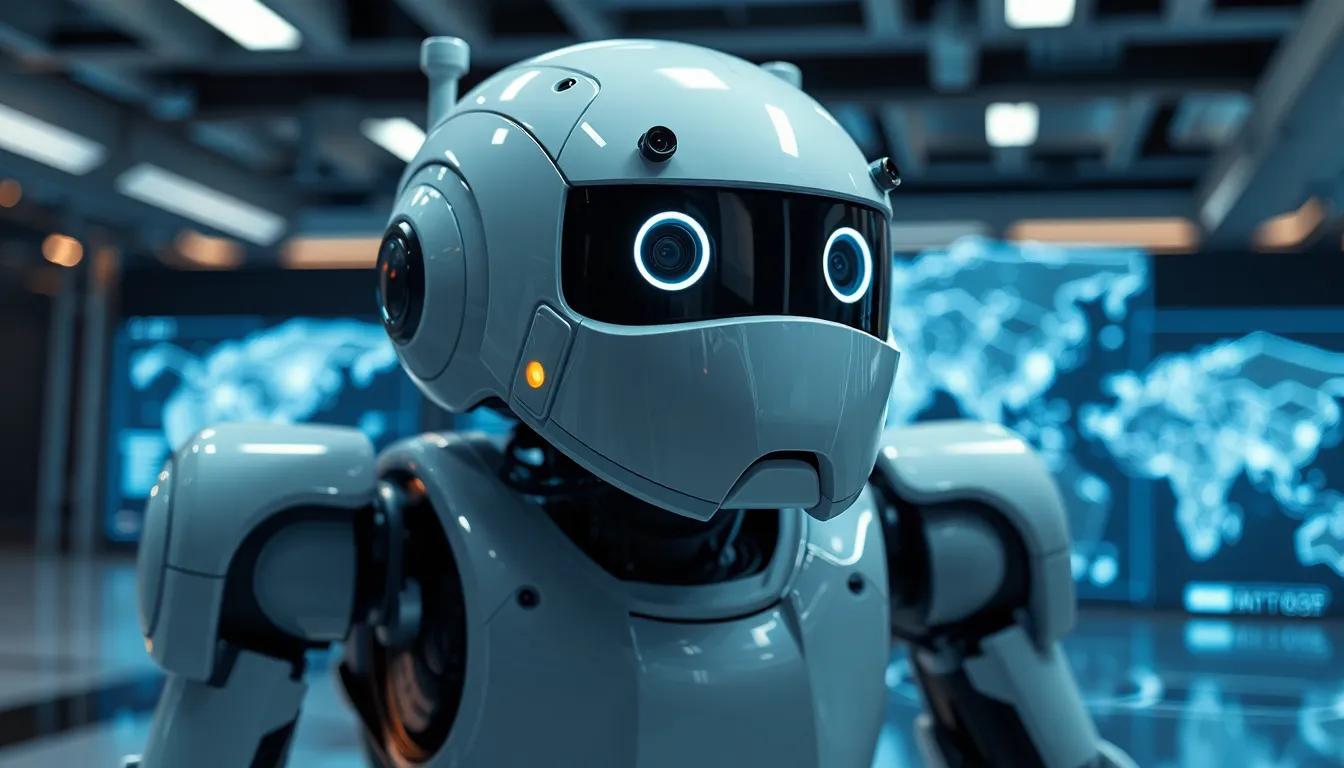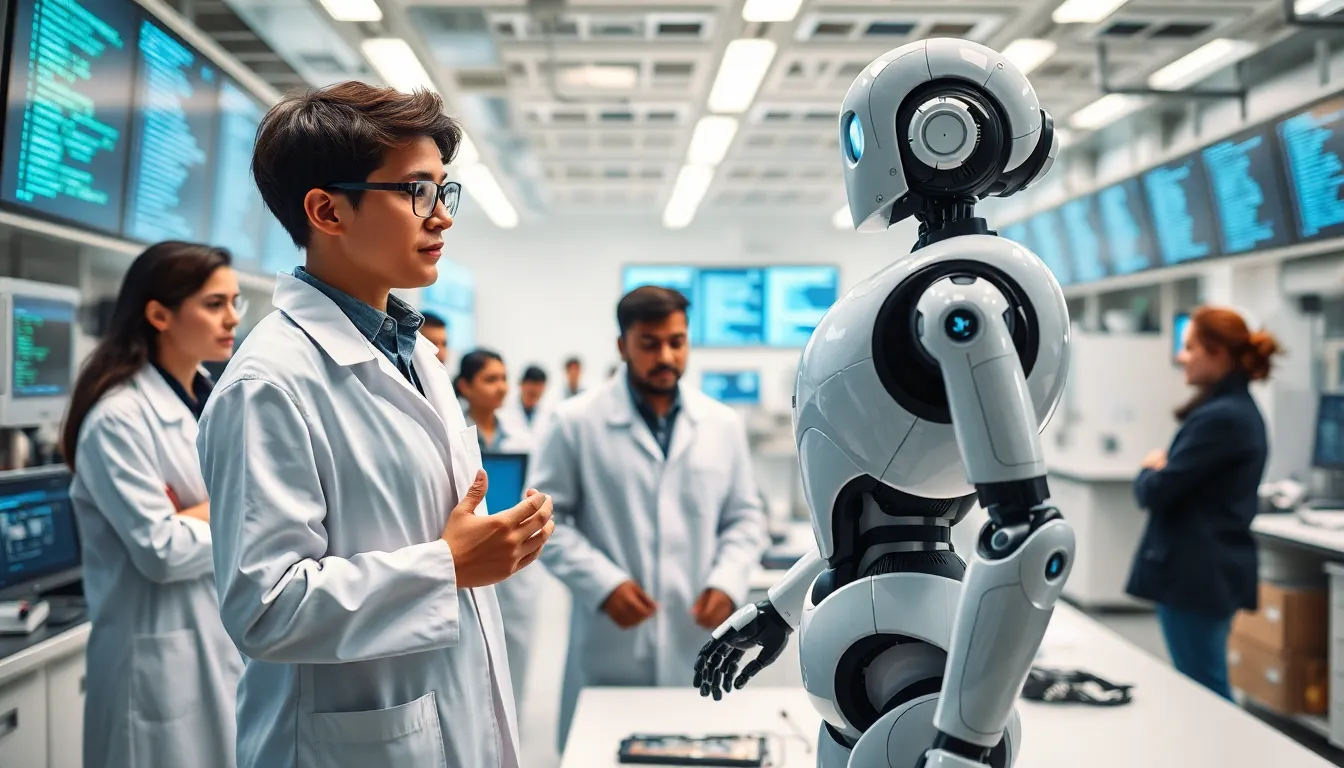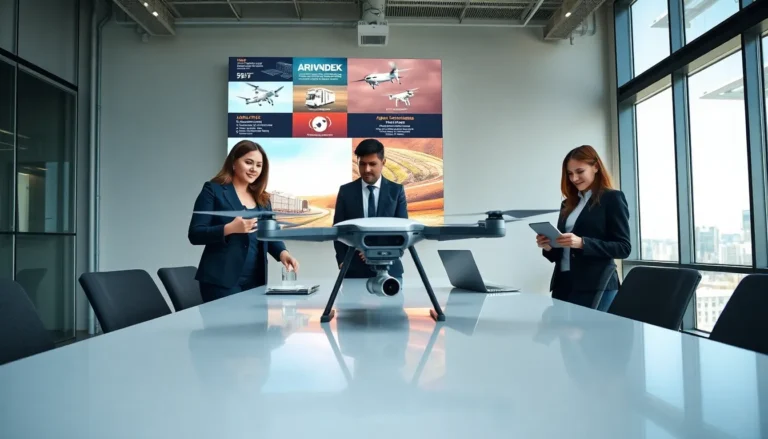Table of Contents
ToggleIn a world where robots are no longer just the stuff of sci-fi movies, programming intelligent robots has become a thrilling frontier. Imagine a future where your coffee machine not only brews the perfect cup but also engages in witty banter about the weather. Sounds far-fetched? Well, it’s closer than you think.
Overview of Intelligent Robots
Intelligent robots represent a significant leap in technology, integrating advanced algorithms with machine learning and artificial intelligence. These robots perform tasks autonomously, adapting to their environments and user interactions. Programming these robots involves using various programming languages, frameworks, and tools designed for robotics.
Robotics applications span several industries, including manufacturing, healthcare, and home automation. In manufacturing, robots assemble products with precision, improving efficiency and reducing errors. In healthcare, assistive robots help patients with mobility, while surgical robots enhance the capabilities of healthcare professionals.
Robots utilize sensors and actuators to gather information and perform actions. Cameras and infrared sensors detect obstacles and map surroundings, facilitating navigation. Actuators enable precise movements, essential for tasks requiring dexterity, such as assembling delicate components.
Programming languages frequently used in robotics include Python and C++. Python offers a straightforward syntax, making it accessible for beginners, while C++ excels in performance and control, crucial for real-time applications. Many robotics frameworks, such as ROS (Robot Operating System), provide libraries and tools for building robot applications efficiently.
As intelligent robots evolve, their ability to learn and adapt will continue to improve. The development of natural language processing enables these robots to understand and respond to human commands, enhancing user experience. Intelligent robots are no longer a distant concept; they are becoming integral facets of daily life.
Key Technologies in Programming Intelligent Robots

Intelligent robots leverage various technologies to operate effectively and interact seamlessly with their environment. Programming these robots requires a focus on machine learning algorithms and sensor integration.
Machine Learning Algorithms
Machine learning algorithms form the backbone of intelligent robotics, enabling these machines to learn from data and improve over time. Supervised learning, unsupervised learning, and reinforcement learning are commonly used approaches. They help robots recognize patterns, make predictions, and adapt to new tasks independently. Algorithms like neural networks and decision trees play vital roles in processing complex inputs and enhancing decision-making capabilities. TensorFlow and PyTorch are popular frameworks that facilitate the development and training of these algorithms. With continued advancements, the efficiency and effectiveness of machine learning in robotics will only increase, providing robots with the ability to handle more intricate tasks.
Sensor Integration
Sensors are crucial for intelligent robots, allowing them to perceive and navigate their environments. Various types of sensors, including cameras, LiDAR, and ultrasonic sensors, provide real-time data for tasks such as obstacle avoidance and path planning. Cameras capture visual information, while LiDAR uses laser light to measure distance, creating detailed maps of surroundings. Ultrasonic sensors detect obstacles by emitting sound waves. Integrating these sensors enables robots to build an understanding of their environment, enhancing their ability to operate autonomously. The development of sensor fusion techniques further improves the accuracy and reliability of robot navigation, ensuring safer and more efficient interactions in diverse settings.
Programming Languages for Intelligent Robots
Numerous programming languages play a vital role in developing intelligent robots. Each language has unique features that cater to different aspects of robotics programming.
Popular Programming Languages
Python ranks as a top choice due to its simplicity and extensive libraries. C++ stands out for performance and memory control, making it ideal for resource-intensive tasks. Java offers platform independence, which enables portability across systems. Furthermore, Lua provides lightweight scripting capabilities, often used in simulation environments. ROS uses Python and C++ to support robust robotic application development.
Advantages and Disadvantages of Each Language
Python’s ease of use simplifies learning for beginners, yet it may lack the execution speed required for complex operations. C++ delivers unmatched performance but involves a steep learning curve and increased complexity in coding. Java allows program versatility but can consume more system resources than other languages. Lua offers a lightweight alternative, though it may not support as extensive a library as Python or C++. Each programming language presents distinct advantages and challenges that can significantly impact project outcomes in robotics.
Applications of Intelligent Robots
Intelligent robots are revolutionizing various sectors, showcasing their versatility and efficiency. Their applications range from industrial automation to service robotics, making impactful contributions to society.
Industrial Automation
Industrial automation significantly benefits from intelligent robots. Factories employ these robots to enhance productivity by performing repetitive tasks like assembly and packaging. They operate with high precision, reducing errors and waste. Additionally, robots can work alongside humans in collaborative environments, improving safety and efficiency. Examples include robotic arms that handle delicate components or transport materials. Companies leveraging automation report increased output and reduced operational costs. Trends show a growing reliance on intelligent robots in manufacturing, particularly as industries pivot towards smart factories.
Service Robotics
Service robotics presents another exciting application for intelligent robots. In hospitality, robots like receptionists and concierges streamline customer service by providing information and assistance. Healthcare settings utilize robots for surgeries and patient care, ensuring enhanced precision and support. Cleaning robots, such as those used for floor maintenance, automatically navigate spaces, saving time and labor. As society increasingly values convenience and efficiency, robots in service roles anticipate growing popularity. Integrating advanced AI allows these robots to interact naturally with people, improving user experience and satisfaction.
Challenges in Programming Intelligent Robots
Programming intelligent robots presents several challenges. Developers encounter significant hurdles in crafting algorithms that balance performance and adaptability.
Complexity of Algorithms
Robots rely on complex algorithms for effective operation, making programming a daunting task. Machine learning, computer vision, and natural language processing require intricate designs and efficient data management. Designers must navigate trade-offs between accuracy and computational efficiency while ensuring robust performance. Maintaining scalability in algorithms becomes essential as robots evolve and learn from new data. Furthermore, real-time processing adds another layer of difficulty, requiring rapid decision-making and adaptability to unforeseen circumstances. The need for continuous updates and fine-tuning complicates this landscape.
Ethical Considerations
Ethical considerations in robotic programming are increasingly critical. Developers must address the potential for bias within algorithms that could lead to unfair outcomes, especially in sensitive applications like healthcare or law enforcement. Transparency in decision-making processes helps build trust and accountability among users. Privacy concerns arise from data collection practices, necessitating strict policies to protect user information. The implications of autonomous actions by robots also prompt debates about responsibility, especially in scenarios involving human safety. Navigating these ethical complexities shapes the future development of intelligent robots.
The journey of programming intelligent robots is just beginning. As technology advances these robots are set to become indispensable in various aspects of daily life. Their ability to learn and adapt will redefine efficiency in industries from manufacturing to healthcare.
Challenges remain in programming these intelligent systems. Developers must navigate complex algorithms while addressing ethical concerns. The future of robotics hinges on balancing innovation with responsibility ensuring that these machines enhance human lives without compromising safety or privacy.
With continued advancements in AI and machine learning the integration of intelligent robots into everyday tasks is not just a possibility but an impending reality. The potential for transformative change is immense and the excitement surrounding this field is palpable.






